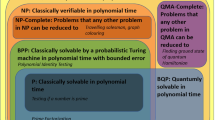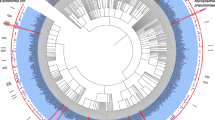Abstract
Membrane computing is an emergent research area studying the behavior of living cells to define bio-inspired computing devices, also called P systems. Such devices provide polynomial time solutions to NP-complete problems by trading time for space. The efficient simulation of P systems poses three major challenging issues: an intrinsic massive parallelism of P systems, an exponential computational workspace, and a non-intensive floating point nature. This paper analyzes the simulation of a family of recognizer P systems with active membranes that solves the satisfiability problem in linear time on three different architectures: a shared memory multiprocessor, a distributed memory system, and a manycore graphics processing unit (GPU). For an efficient handling of the exponential workspace created by the P systems computation, we enable different data policies on those architectures to increase memory bandwidth and exploit data locality through tiling. Parallelism inherent to the target P system is also managed on each architecture to demonstrate that GPUs offer a valid alternative for high-performance computing at a considerably lower cost. Our results lead to execution time improvements exceeding 310\(\times \) and 78\(\times \), respectively, for a much cheaper high-performance alternative.














Similar content being viewed by others
References
Message Passing Interface (MPI). http://www.mcs.anl.gov/mpi
The OpenMP Specification. http://www.openmp.org
Alonso S, Fernández L, Arroyo F, Gil J (2008) A circuit implementing massive parallelism in transition P systems. Int J Inform Technol Knowl 2(1):35–42
Asanovic K, Bodik R, Catanzaro B, Gebis J, Joseph J, Husbands P, Keutzer K, Patterson DA, Plishker WL, Shalf J, Williams SW, Yelick KA (2006) The landscape of parallel computing research: a view from Berkeley. University of California, Berkeley, EECS Department
Asghar S, Aubanel E, Bremner D (2013) A dynamic moldable job scheduling based parallel SAT solver. In: Proceedings of international conference on parallel processing (ICPP), pp 110–119
Borkar S, Jouppin NP, Stenstrom P (2007) Microprocessors in the era of terascale integration. In DATE 07: Proceedings of the conference on design, automation and test in Europe, EDA Consortium San Jose, CA, USA, ACM, pp 237–242
Cecilia JM, García JM, Guerrero GD, del Amor MAM, Pérez-Hurtado I, Pérez-Jiménez MJ (2010) Simulating a P system based efficient solution to SAT by using GPUs. J Logic Algebraic Program 79(6):317–325
Cecilia JM, García JM, Guerrero GD, del Amor MAM, Pérez-Hurtado I, Pérez-Jiménez MJ (2010) Simulation of P systems with active membranes on CUDA. Brief Bioinform 11(3):313–322
Cecilia JM, García JM, Guerrero GD, del Amor MAM, Pérez-Jiménez MJ, Ujaldón M (2012) The GPU on the simulation of cellular computing models. J Soft Comput 16(2):231–246 (Special issue on evolutionary computation on general purpose graphics processing units)
Cook SA (1971) The complexity of theorem-proving procedures. In STOC ’71: Proceedings of the third annual ACM symposium on Theory of computing, New York, NY, USA, ACM, pp 151–158
Díaz D, Graciani C, Gutiérrez-Naranjo MA, Pérez-Hurtado I, Pérez-Jiménez MJ (2009) Software for p systems. In: Paun Gh, Rozenberg G, Salomaa A, (eds) The Oxford handbook of membrane computing, pp 437–454. Oxford University Press, Oxford
García-Quismondo M, Gutiérrez-Escudero R, Pérez-Hurtado I, Pérez-Jiménez MJ, Riscos-Núñez A (2010) An overview of p-lingua 2.0. Lecture Notes Comput Sci 5957:264–288
Garland M, Kirk DB (2010) Understanding throughput-oriented architectures. Commun ACM 53(11):58–66
Hwu W (2011) GPU computing gems: Emerald Edition. Morgan Kaufmann, Los Altos
Jin H, Jespersen D, Mehrotra P, Biswas R, Huang L, Chapman B (2011) High performance computing using MPI and OpenMP on multi-core parallel systems. J Parallel Comput 37(9):562–575
Meyer Q, Schonfeld F, Stamminge M, Wanka R (2010) 3-SAT on CUDA: towards a massively parallel SAT solver. In: Proceedings of IEEE international conference on high performance computing and simulation (HPCS), pp 306–313
Nguyen V, Kearney D, Gioiosa G (2010) An extensible, maintainable and elegant approach to hardware source code generation in reconfig-p. J Logic Algebraic Program 79(6):383–396
NVIDIA (2011) CUDA Programming Guide 4.0
Paun G (2002) Membrane computing. An introduction. Springer, Berlin, pp 9–419
Paun G, Centre T, Science C (1998) Computing with membranes. J Comput Syst Sci 61:108–143
Pérez-Jiménez MJ, Romero-Jiménez Á, Sancho-Caparrini F (2003) Complexity classes in models of cellular computing with membranes. J Nat Comput 2(3):265–285
Qasem M (2009) WinSAT website. http://users.ecs.soton.ac.uk/mqq06r/winsat
Rabenseifner R, Hager G, Jost G (2009) Hybrid MPI/OpenMP parallel programming on clusters of multi-core SMP nodes. In: PDP 2009: Proceedings of the 17th euromicro international conference on parallel, distributed, and network-based processing. Computer Society Press, Weimar, pp 227–236
Shi Z (2011) Stochastic modeling, correlation, competition, and cooperation in a CSMA wireless network. ProQuest, UMI Dissertation Publishing
Trieflinger S (2013) High performance peer-to-peer desktop grid computing: architecture, methods and applications. PhD dissertation. University of Stuttgart
Acknowledgments
This work was jointly supported by the Fundación Séneca (Agencia Regional de Ciencia y Tecnología, Región de Murcia) under grant 15290/PI/2010, the Spanish MEC and European Commission FEDER under grant TIN2012-31345, the Junta de Andalucía under Project of Excellence P12-TIC-1741, the Universidad Católica San Antonio de Murcia (UCAM) under grant PMAFI/26/12 and the supercomputing infrastructure of the NLHPC (ECM-02). We also thank NVIDIA for hardware donation under CUDA Teaching Center 2011-14, CUDA Research Center 2012-14 and CUDA Fellow 2012-14 Awards. Finally, we want to thank all reviewers of this paper for the valuable suggestions they gave us to improve the overall quality of this paper.
Author information
Authors and Affiliations
Corresponding author
Rights and permissions
About this article
Cite this article
Cecilia, J.M., García, J.M., Guerrero, G.D. et al. Evaluating the SAT problem on P systems for different high-performance architectures. J Supercomput 69, 248–272 (2014). https://doi.org/10.1007/s11227-014-1150-9
Published:
Issue Date:
DOI: https://doi.org/10.1007/s11227-014-1150-9




